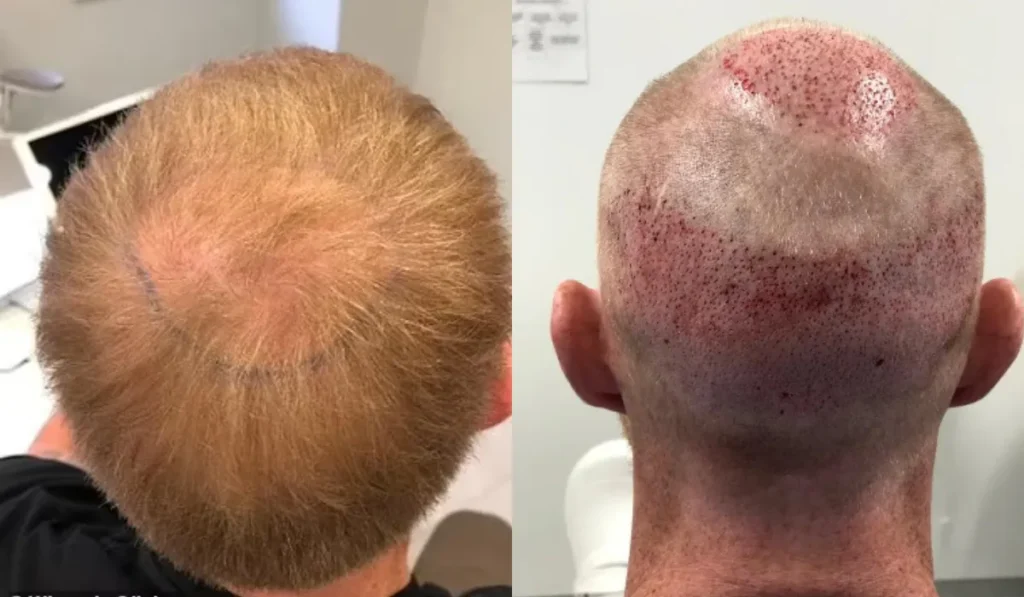
England’s cricket captain faced more than just opponents on the field. Hair loss affected his confidence, a struggle many men silently endure. His decision to undergo a hair transplant in 2018 marked a turning point, both physically and mentally.
The procedure, performed by Wimpole Clinic, involved 1,800 grafts to restore thinning areas. This step wasn’t just about appearance—it highlighted the link between mental health and self-image. For public figures like him, such choices resonate deeply with fans facing similar challenges.
This article explores his journey, from early struggles to renewed confidence. We’ll examine the technique used, the impact on his career, and how his openness helps reduce stigma around hair loss solutions.
Choosing a hair transplant isn’t just about vanity—it’s a calculated decision for lasting confidence. The England cricket star’s 2018 procedure at London’s Wimpole Clinic set a benchmark for subtle, effective restoration.

The FUE technique (Follicular Unit Extraction) was chosen for its precision and scar-free results. Unlike FUT, which leaves a linear scar, FUE extracts individual grafts from the scalp for natural-looking density.
Wimpole Clinic, with multiple UK locations, specializes in advanced methods. Their transparent pricing and financing options make treatments accessible.
Dr. Mir Malkani transplanted 1,800 grafts to the crown and temples—a strategic count for early-stage thinning (Norwood Scale 2–3). This preventative approach ensures better long-term coverage.
Other athletes often wait until severe loss occurs, but early intervention minimizes visible signs of the procedure. Dr. Malkani’s expertise in graft placement played a pivotal role in the seamless outcome.
Thinning hair became an unexpected challenge for the cricket star during his prime. While athletes train to overcome physical opponents, hair loss presented a battle against genetics and public perception. The decision to undergo restoration reflected both personal needs and professional realities.
Noticing receding hairlines at 22, the sportsman faced male pattern baldness earlier than most. Shoulder surgery in 2018 accelerated thinning due to stress and medication side effects. Teammates' lighthearted jokes about his changing appearance masked deeper insecurities.
Research shows 13% of UK men experience mental health impacts from hair loss. For public figures, this struggle intensifies under stadium lights and HD cameras. Preventative action at Norwood Scale 2-3 often yields better long-term results than waiting for advanced stages.

Cricket's visual nature amplifies appearance concerns. Helmets magnify scalp visibility, while overhead cameras capture every angle. Social media commentary during matches turned private matters into public debates.
A generational shift sees modern athletes rejecting outdated masculinity norms. Where past players might ignore grooming concerns, today's stars openly address them. This transparency helps normalize solutions like transplants.
| Norwood Stage | Hair Loss Pattern | Recommended Action |
|---|---|---|
| 2-3 | Temple recession, mild crown thinning | Preventative treatments or early transplant |
| 4-5 | Pronounced crown baldness | Higher graft counts required |
| 6-7 | Advanced balding | Limited donor availability |
The cricket star's choice reflects a growing trend among professionals. Addressing hair loss early preserves both appearance and confidence in high-pressure careers. His openness about the journey continues to reshape conversations in locker rooms nationwide.
High-definition broadcasts magnify every detail, including hairline shifts. For athletes, these changes become public narratives. The cricket star’s journey from thinning to full coverage offers a blueprint for effective restoration.
Diffuse thinning at the crown and receding temples were evident by 2018. Match footage showed visible scalp under harsh stadium lighting. Early intervention prevented advanced balding patterns.
Redheads, like this athlete, face unique challenges. Their hairline grafts require precise placement due to finer texture. Studies show 85–90% graft survival rates for this hair type versus 90–95% for darker shades.
Full density emerged within 12 months. The 2019 World Cup revealed seamless integration—no detectable signs of the before after transition. Strategic styling hid the recovery phase effortlessly.
Key aftercare steps included:
| Hair Type | Graft Survival Rate | Special Considerations |
|---|---|---|
| Red | 85–90% | Finer texture, requires expert placement |
| Dark | 90–95% | Higher contrast with scalp |
| Curly | 88–93% | Natural density illusion |
Today, the athlete’s styling habits reflect renewed confidence. Short, textured cuts replace earlier attempts to conceal thinning. Clinics now cite his results when counseling clients on early intervention benefits.
Modern hair restoration blends medical precision with artistic design. The FUE technique revolutionized transplants by minimizing scarring while maximizing natural results. This section breaks down the science behind the procedure and what patients actually experience.

A micro punch tool extracts individual grafts from the donor area at 0.8mm precision. Unlike older methods, this leaves no linear scars—just tiny dots hidden by existing hair. The scalp heals within days.
UK clinics like Wimpole use motorized tools for consistent speed. Each procedure follows strict steps:
The cricket star's 7-hour session included entertainment options to ease nerves. "It felt like a long haircut," he later described. Temporary doubt ("buyer's remorse") faded within 72 hours as swelling decreased.
Strategic extraction eliminated full-head shaving. Only small donor areas were trimmed—a game-changer for public figures. Pain levels compare to dental fillings, with most reporting 2/10 discomfort.
| Factor | UK Clinics | Turkish Clinics |
|---|---|---|
| Anesthesia | Licensed anesthetists present | Often administered by nurses |
| Graft Handling | Hypothermic storage solutions | Variable preservation standards |
| Post-Op Care | 72-hour checkups included | Remote follow-up common |
Pre-op tests ensure safety and predict results:
All CQC-regulated UK facilities maintain these standards, giving patients clear benchmarks for quality.
Self-image struggles often go unnoticed in men battling hair loss. The cricket star’s admission of "subconscious hair-ruffling habits" before his transplant reveals a deeper psychological toll. For many, thinning hair isn’t just cosmetic—it’s a silent crisis.
British men face disproportionate mental health risks from appearance anxiety. Studies link male pattern baldness to higher suicide rates among men aged 18–40. Early intervention through procedures can reverse this trajectory.
Clinics like Wimpole now partner with therapists, recognizing that restoration impacts confidence as much as hairlines. Their 2023 campaign, "Scalp & Mind," offers free counseling sessions with transplants.
| Factor | Traditional View | 2023 Shift |
|---|---|---|
| Athlete Transparency | Wayne Rooney’s initial secrecy (2011) | Open discussions normalize solutions |
| NHS Stance | Cosmetic = vanity | Recognizes psychological benefits |
| Sports Culture | Mockery in locker rooms | Education programs in academies |
The NHS now acknowledges hair restoration’s role in preventing depression. Sports teams are following suit—youth academies could soon include hair loss education alongside fitness training.
Breaking the stigma starts with stories like the cricket star’s. His journey proves that addressing hair loss early preserves both appearance and emotional resilience.
Understanding hair transplant costs helps patients make informed decisions. Prices vary based on technique, clinic reputation, and geographic location. This section breaks down key financial factors for those exploring hair restoration.
UK clinics typically charge £4,000–£15,000, while Turkish alternatives like Heva Clinic Istanbul offer treatment for £1,500–£3,000. The cricket star’s Wimpole Clinic procedure reportedly cost ~£6,300 at £3.50 per graft (1,800 grafts).
Key differences in pricing reflect:
Clinics warn against "£999 specials" that risk high transection rates. "Cheap procedures often mean inexperienced technicians handling grafts," notes a Wimpole representative.
| Cost Factor | UK Clinics | Turkish Clinics |
|---|---|---|
| Per Graft | £2.50–£5.00 | £0.80–£1.50 |
| Travel Expenses | None | £300–£600 flights/hotels |
| Follow-up Visits | Included | Additional fees |
Many UK clinics now offer finance options like 0% APR plans. Compared to lifelong topical treatment costs (£1,200/year), FUE provides permanent results after one investment.
Leadership roles come with unexpected personal challenges. The cricket star's journey highlights how public figures navigate appearance pressures while inspiring others. His decision to address hair loss early created ripple effects across sports culture.
Captaincy amplified visibility demands. Stadium jumbotrons and sponsor close-ups magnify every detail. "You're representing more than yourself," notes an ECB spokesperson. This scrutiny drives earlier decision-making about cosmetic procedures.
Progressive team contracts now consider holistic athlete care:
| Traditional Clause | 2023 Innovation |
|---|---|
| Performance bonuses only | Wellness stipends for hair/scalp treatments |
| Appearance fines | Sponsored grooming partnerships |
Post-transplant brand deals validate the shift. Brylcreem's 2022 campaign featuring the athlete signaled mainstream acceptance. The ECB's wellness initiatives now include dermatologist consultations for academy players as young as 18.
His advice?
"Don't rush; listen to clinic guidance."
This measured approach resonates particularly with younger athletes at similarageand career stages.
The cricket legend’s journey underscores how hair transplant procedures go beyond aesthetics. His openness about the process helped normalize solutions for mental health struggles tied to hair loss. Today, FUE techniques offer discreet, lasting results for those facing similar challenges.
Early intervention remains key. Assessing hair loss using the Norwood Scale can guide timely decisions. Clinics like Wimpole provide tailored options, balancing quality and budget.
Ultimately, restoring hair often means restoring confidence. Whether for public figures or everyday individuals, addressing hair health is a step toward overall well-being. Consult a specialist to explore personalized solutions.
